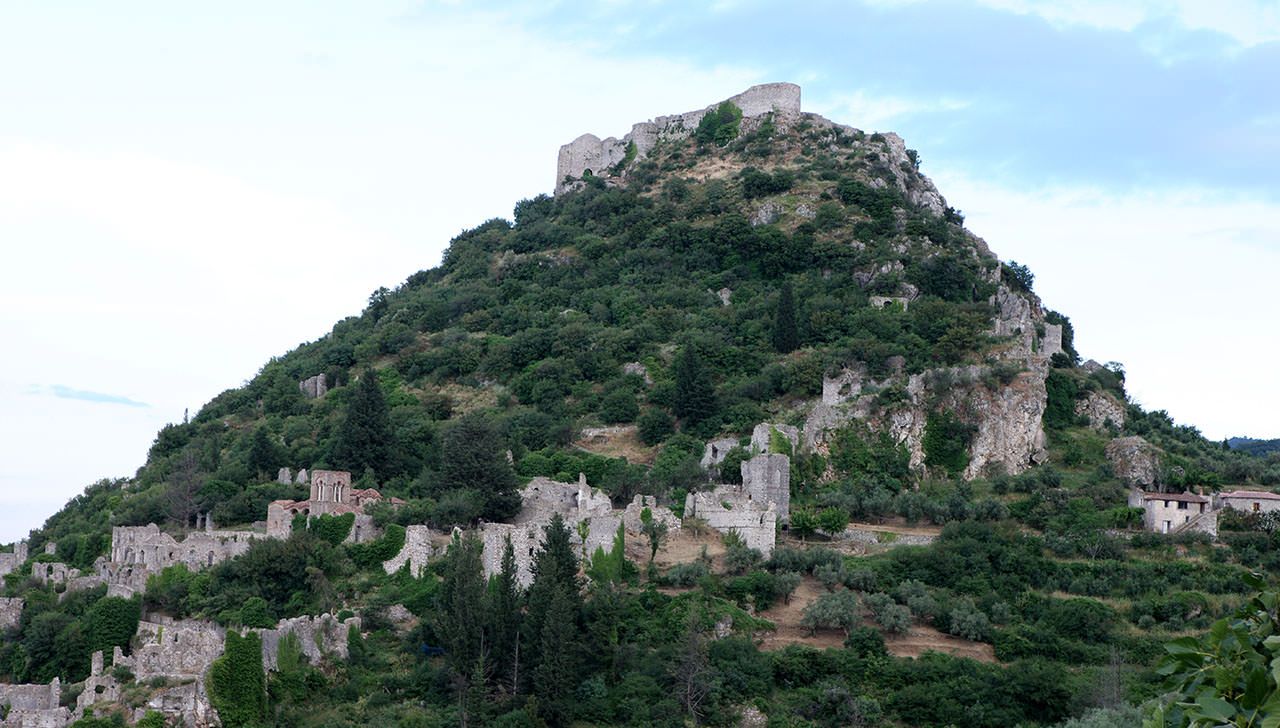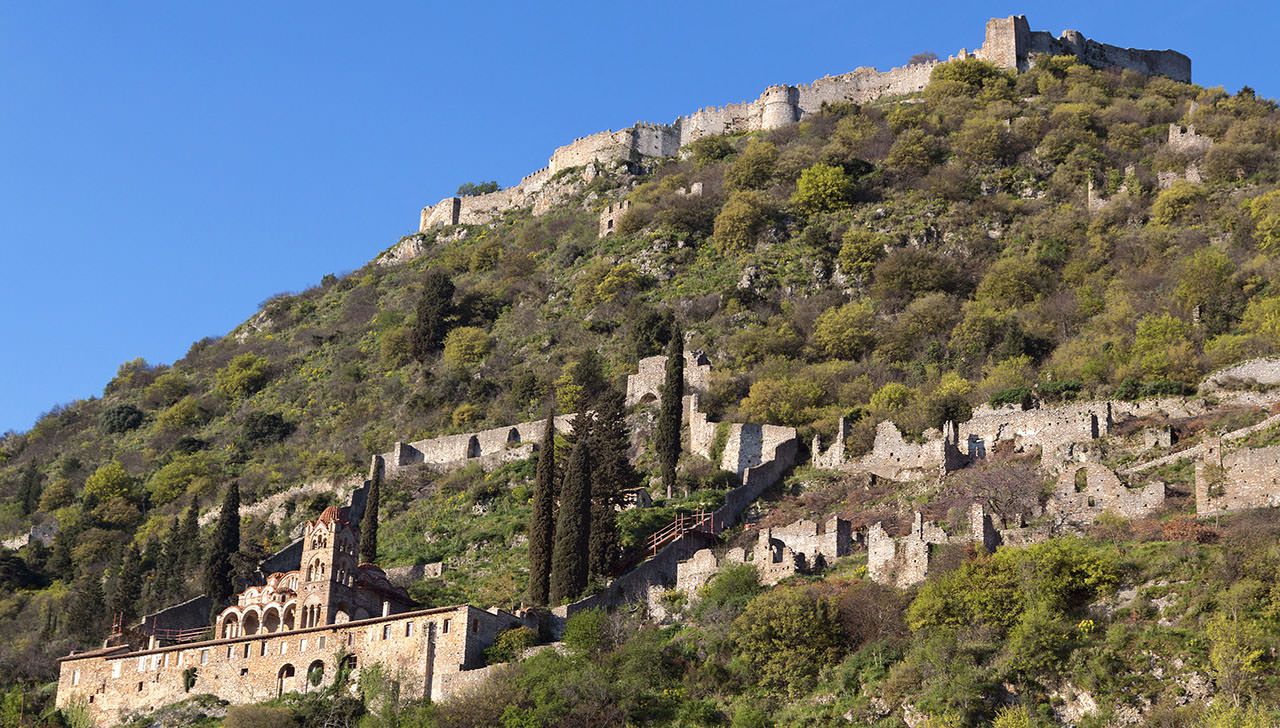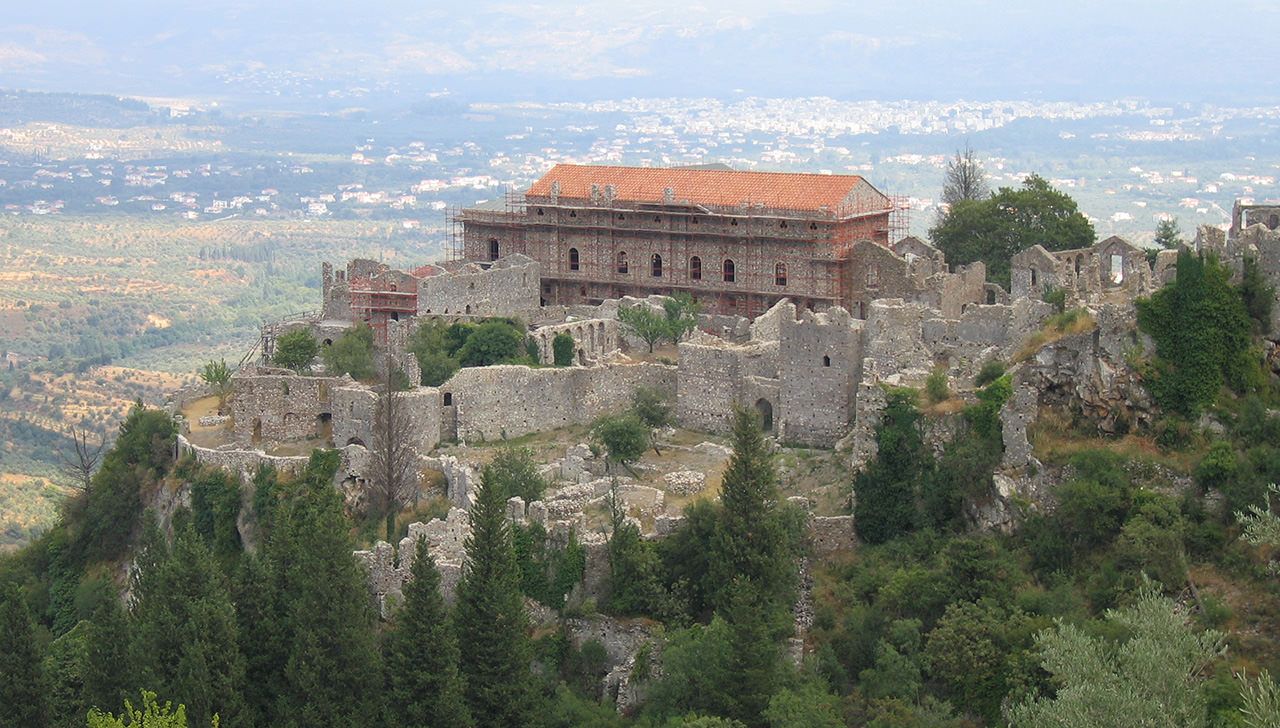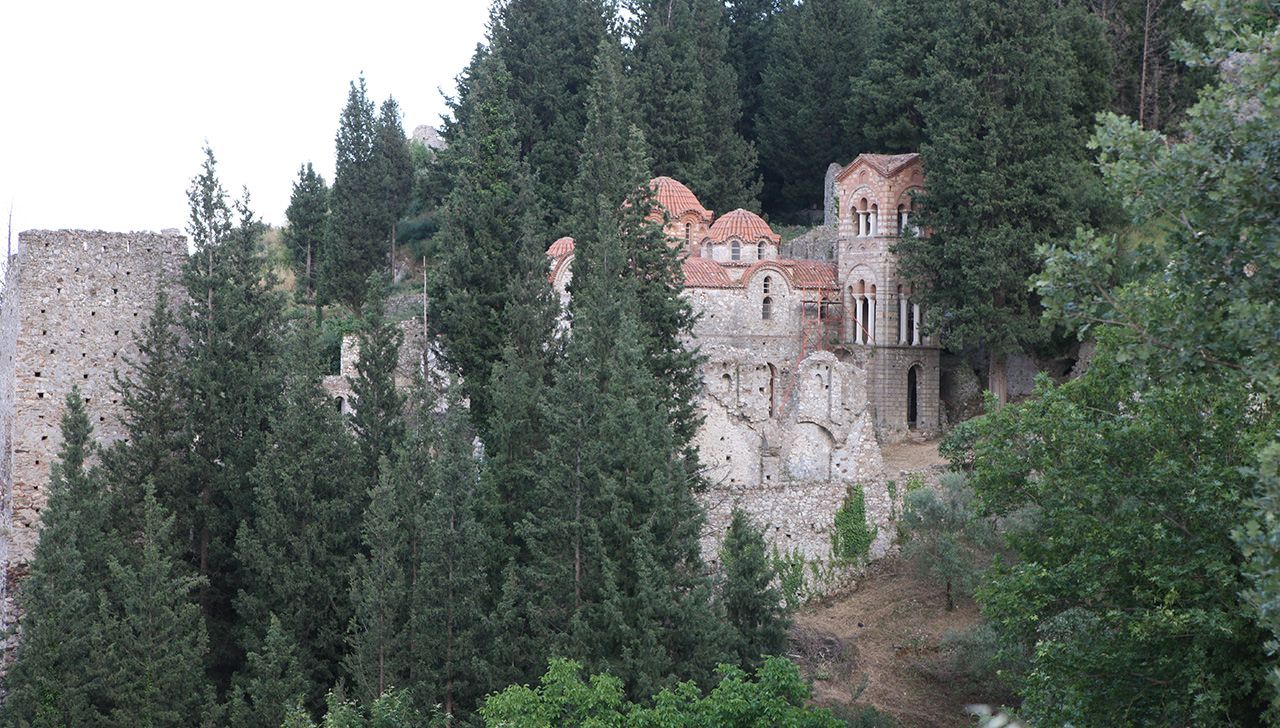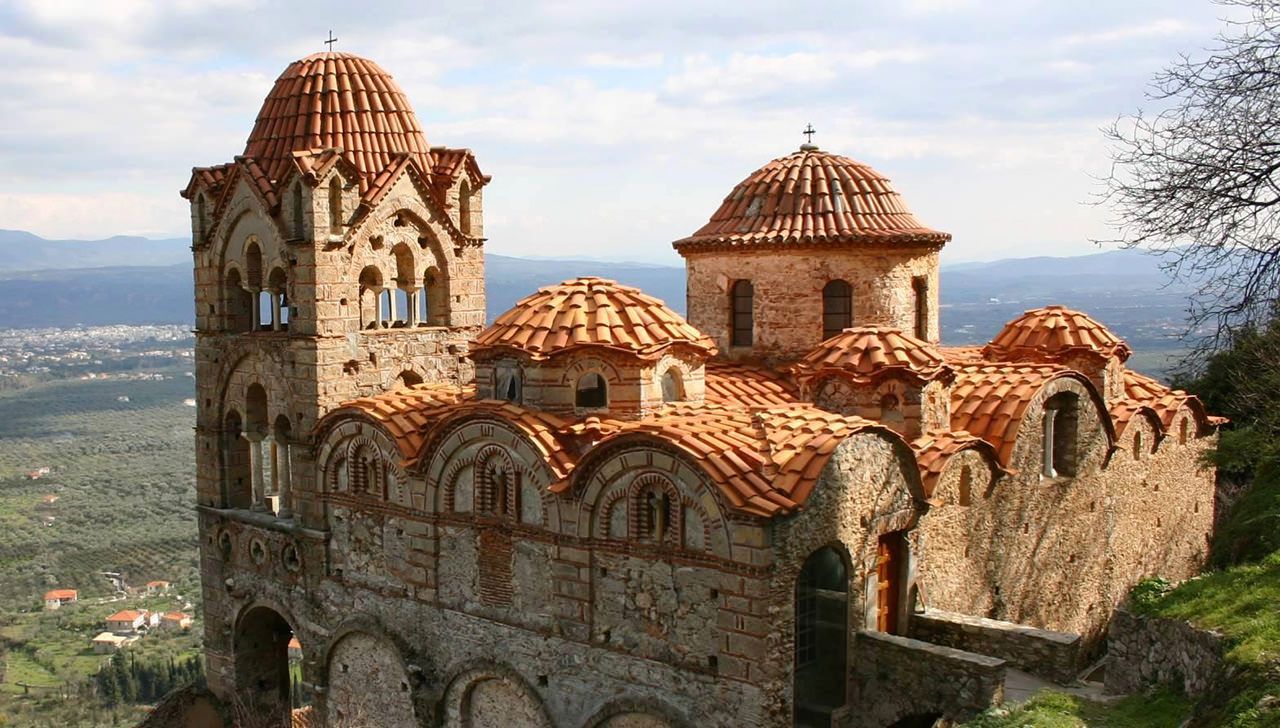History
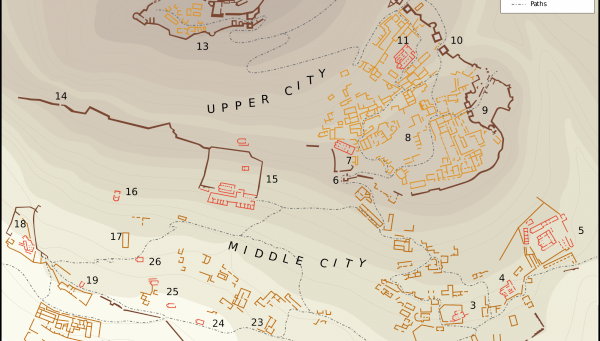
Mystras is located in Laconia, five kilometers northwest of Sparta, on a rocky hill at the foot of Taygetos. The deserted castle used to be a brilliant and powerful Byzantine state. Mystras was the swan song of the Byzantine Empire and the last bastion of Hellenism before the conquest by the Ottomans, and the cradle of Byzantine art and Neo-Platonic philosophy.
The establishment of Mystras was followed by the first conquest of Constantinople by the Crusaders in 1204. After the division is of the Byzantine Empire, the Frankish Peloponnese granted Villehardouins by establishing family of the Principality of Achaia and a few years later, in 1249, the Frankish prince William II Villehardouin built the castle of Mizithra or Mystras - as it is now known - at the top of the hill. The name derives from a Greek cheese (mizithra), due to the shape of the mountain or the profession of the owner of the hill.
This castle was the core of the Commonwealth of Mystras. Because of the safety that was provided by the Natural environment the citizens of Lacedaemon moved around the castle. With time, Mystras was developed into a major urban center. The city was built in three levels. At the peak of the mountain was the Upper Country in which there were mansions and at the Low Country lived the middle class.
During 1308 the administrative system was redesigned and the role of Mystras was upgraded in the mid 14th century. In this period of time, Mystras became the headquarters of Despotate of Morea. For the next 150 years was the center of political and cultural life. Philosophers and well-known artists were gathered in the courtyard of Despotato, such as Georgios Gemistos or Plithonas.
In 1449, Constantine Palaeologus, was crowned emperor of Byzantium in the Metropolis of Mystras, who was to become the last Byzantine Emperor. Constantine was killed in the siege and fall of Constantinople by the Turks in 1453.
In 1460 Mistras surrendered to the Turks by his brother Constantine, Demetrius Palaeologus, giving thus an end in the glory and in the course of a thriving city.
However, although Mystras was under the Turkish occupation still served as headquarters for the Turkish commander and as center of silk production. In the period 1687-1715 Mystras was under the occupation of Venetians. The next liberation was held for a very short time during the revolution of Orlov at 1770, but shortly after this it was looted by Albanians soldiers.
The participation of Mystras was also important during the Greek revolution, which started at 1821. In 1825 it was plundered by Ibrahim and since then the city was gradually abandoned. The new Mistras is located at the foot of the hill.
With the establishment of the Free State province of the Principles Laconia settled in Mystras ruined, but later, in 1834, the new monarch of Greece, King Otto founded the city of Sparta, then the residents of Mystras moved to the new town. The last residents will leave the castle in 1953 after the expropriation of the site by the Greek state. A few years earlier, in 1921, the area was declared by royal Order as an outstanding Byzantine monument.
In 1989, Mystras joined the list UNESCO World Heritage of Unesco.
Nowadays, the most important monument in the archaeological site of Mystras is the medieval castle. Also, within the walls of the old city there are monasteries, churches, chapels, houses and mansions. Mytsras is one of the few well-preserved Byzantine settlements. In an effort to give back Mystras’ previous glory, Archaeological Service conducts restoration work.
The most famous surviving monuments of the "dead city" is the imposing church of Aghia Sophia, the Palace of the Despots, Pantanassa’s Monastery, the Cathedral (or Aghios Dimitrios), Aghioi Theodoroi, Panaghia Odigitria, the ruins of the mansions of Lascaris and Fragopoulos.

